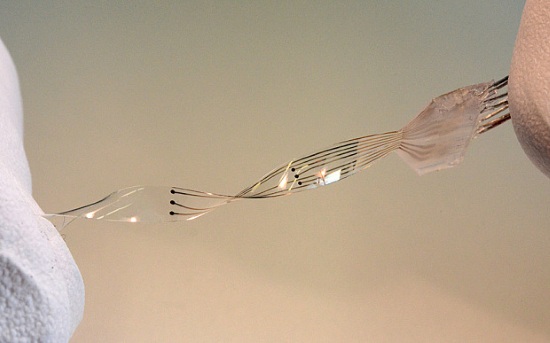French scientists have developed a thin, prosthetic ribbon embedded with electrodes that lies along the spinal cord and delivers electrical impulses and drugs for the purpose of activating nearby cells.
The prosthetic, soft enough to bend with the tissue surrounding the backbone so as to avoid discomfort, was tested on paralyzed rats. After a few weeks of training, the animals were able to walk again.

The Ecole Polytechnique Fédérale de Lausanne-based researchers are now hoping to move to clinical trials in humans. They believe the device could last in humans for 10 years at a time before needing to be replaced.

The device, referred to as “e-Dura,” proved remarkably effective due to its dura mater (the aforementioned soft tissue around the spine) mimickery; its similarities led to the rats’ body not rejecting its presence.
“Our e-Dura implant can remain for a long period of time on the spinal cord or cortex,” said Professor Stéphanie Lacour. “This opens up new therapeutic possibilities for patients suffering from neurological trauma or disorders, particularly individuals who have become paralyzed following spinal cord injury.”
In previous attempts, researchers found that chemicals and electrodes implanted in the spine tend to take on the role of the brain and stimulate nerves; this led to the rats’ legs moving involuntarily when placed on a treadmill.
The e-Dura’s flexibility and stretchiness allows it to be placed directly on the spinal cord, where it can then imitate the mechanical properties of living tissue while simultaneously delivering electric impulses and drugs to activate cells.
e-Dura is made of silicon and covered with gold electric conducting tracks that can be pulled and stretched. The electrodes are made of silicon and platinum microbeads which can also bend without breaking.
Writing in the journal Science , where the results were published, science writer Robert Service said, “The implants Lacour’s team created still have to be wired to the outside world to operate, but she and her colleagues are designing wireless versions of the technology. Watch out, Hollywood, reality is catching up.”
To learn more about the technology, check out the video below:
Via Telegraph
Advertisement
Learn more about Electronic Products Magazine





